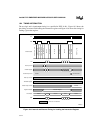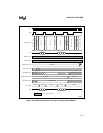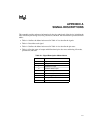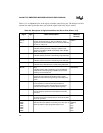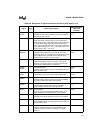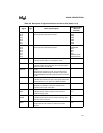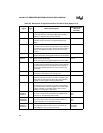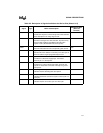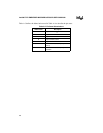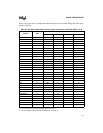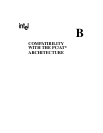
Intel386™ EX EMBEDDED MICROPROCESSOR USER’S MANUAL
A-4
HOLD I Hold Request:
An external bus master asserts HOLD to request control of
the local bus. The processor finishes the current nonlocked
bus transfer, releases the bus signals, and asserts HLDA.
P1.6
INT9
INT8
INT7
INT6
INT5
INT4
INT3
INT2
INT1
INT0
I Interrupt Requests:
These maskable inputs cause the processor to suspend
execution of the current program and execute an interrupt
acknowledge cycle.
P3.0/TMROUT0
P3.1/TMROUT1
TMRGATE1
TMRCLK1
TMRGATE0
TMRCLK0
P3.5
P3.4
P3.3
P3.2
LBA# O Local Bus Access:
Indicates that the processor provides the READY# signal
internally to terminate a bus transaction. This signal is
active when the processor accesses an internal peripheral
or when the chip-select unit provides the READY# signal for
an external peripheral.
—
LOCK# O Bus Lock:
Prevents other bus masters from gaining control of the bus.
P1.5
M/IO# O Memory/IO:
Indicates whether the current bus cycle is a memory cycle
or an I/O cycle.
—
NA# I Next Address:
Requests address pipelining.
—
NMI ST Nonmaskable Interrupt Request:
Causes the processor to suspend execution of the current
program and execute an interrupt acknowledge cycle.
—
PEREQ I Processor Extension Request:
Indicates that the math coprocessor has data to transfer to
the processor.
TMRCLK2
P1.7
P1.6
P1.5
P1.4
P1.3
P1.2
P1.1
P1.0
I/O Port 1:
General-purpose, bidirectional I/O port.
HLDA
HOLD
LOCK#
RI0#
DSR0#
DTR0#
RTS0#
DCD0#
Table A-2. Description of Signals Available at the Device Pins (Sheet 3 of 6)
Signal Type Name and Description
Multiplexed With
(Alternate
Function)



